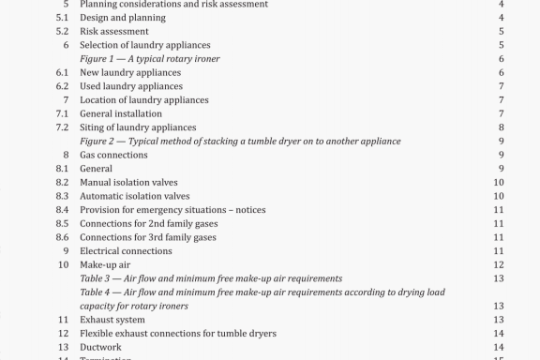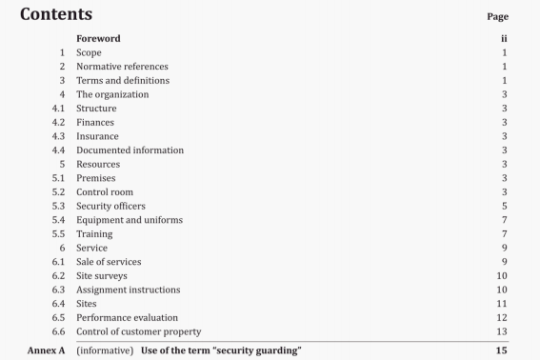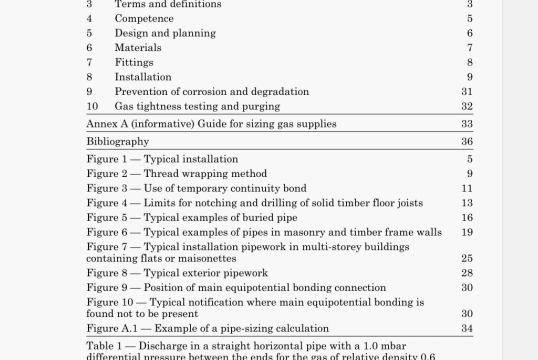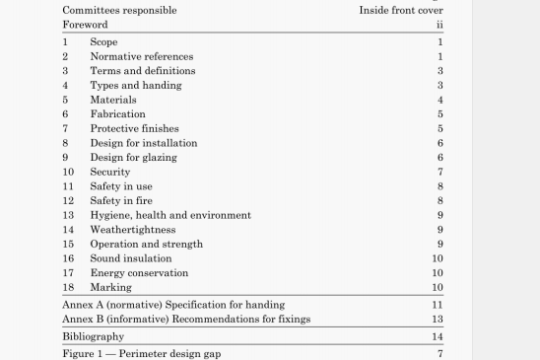BS 750:2012 pdf download
BS 750:2012 pdf download.Specification for underground fire hydrants and surface box frames and covers.
4.1 General
As a minimum, fire hydrants conforming to this British Standard shall conform to BS EN 14339.
Fire hydrants shall have a design life of a minimum of 50 years. This shall be determined by reference to:
a) the properties of the materials used in the construction;
b) the engineering design of the fire hydrant
c) the normal situation of installation; and
d) the conditions of use.
Where materials have time-dependent properties, these shall be selected with reference to the manufacturer’s data on such properties to determine their suitability for the function and life span.
Where components of the fire hydrant are designed to be serviceable, this shall not be regarded as a reason to design for a shorter operating life.
Serviceable components shall include those having potential for accidental damage and wear from abnormal use.
The manufacturer shall ensure that parts that are considered to be subject to wear shall be available for the lifetime of the valve.
Fire hydrants shall be one of the following two types:
1) type 1 (see 4.2 and Figure 1);
2) type 2 (see 4.3 and Figure 2).
4.2 Type 1 fire hydrant
Type 1 fire hydrants shall conform to the dimensions shown in Figure 1.
The operating valve shall conform to BS EN 1074-1,
BS EN 1074-2, BS 5163-1 and BS 5163-2 for PFA 16 or PFA 25 valves.
Materials for duckfoot bends shall conform to BS EN 1S61 or BS EN 1563. The V and Z flanges DNSO, PN 16 or PN 25, as shown in Figure 1, shall be compatible with the mating dimensions given in BS EN 1092-2 and BS EN 1092-3 as appropriate, using the bolts, studs or set screws specified.
NOTE 1 They are not required to be circulor and are not required to have raised face’s.
NOTE 2 V or Z flanges may have a groove in the face to accommodate an 0 ring. The bolt holes may be slotted and the slots may extend to the periphery of the flange.
4.3 Type 2 fire hydrant
4.3.1 Classification
Type 2 fire hydrants shall conform to one of the following patterns.
a) Type 2a: The bonnets and/or outlets of this pattern shall be secured in such a manner that they cannot be removed when installed in a pipeline, With the exception of stem sealings, it shall be made clear in the manufacturer’s literature that the fire hydrant cannot be maintained while in situ.
4.3.3 Materials
4.3.3.1 All copper alloy materials used in the construction of fire hydrants shall conform to BS EN 1982, BS EN 12163, 85 EN 12164, BS EN 12165, BS EN 12167 or BS EN 12168.
4.3.3.2 The threaded part of the valve that engages with the stem shall be copper alloy.
4.3.3.3 All components of the valve operating mechanism shall consist of materials that avoid the risk of corrosion or galling resulting in seizure or mechanical failure.
4.3.3.4 Stems of type 2 fire hydrants shall be manufactured from stainless steel conforming to BS EN 10088.1 with a minimum chromium content of 13%, or copper alloy (see 4.3.3.1).
4.3.3.5 Stainless steel outlets shall be manufactured from grades conforming to BS EN 10088-1 with a minimum chromium content of 13%.
4.3.4 Sealings
Stem sealings shall be of one of the following two types:
a) toroidal sealing ring (‘0” ring) type: or
b) other pressure actuated types of seal.
Stem seals located within the pressure retaining body of the valve shall be maintainable, in situ, while mounted in a chamber with a surface box frame and cover in accordance with Clause 14, and depressurized at the point at which the replacement is being effected.
Where stem sealing is of the toroidal sealing ring (“0” ring) type, two such seals shall be used.
A wiper ring shall be positioned above the seals to prevent the ingress of foreign matter.
4.3.5 Bonnets
Bonnets connected by means other than those described for type lb and type 2c shall be secured by two independent and functionally different means. These different means shall each be capable of preventing the bonnet becoming unintentionally detached in the absence of the other.
Components involved in the attachment or retention of fire hydrant bonnets shall not be made from plastics.
Bonnets connected by means other than those described for type 2b and type 2c shall conform to the type requirements in Clause 10 with:
a) both Security systems in place;
b) only one of the security systems in place: and
c) only the other security system in place.




